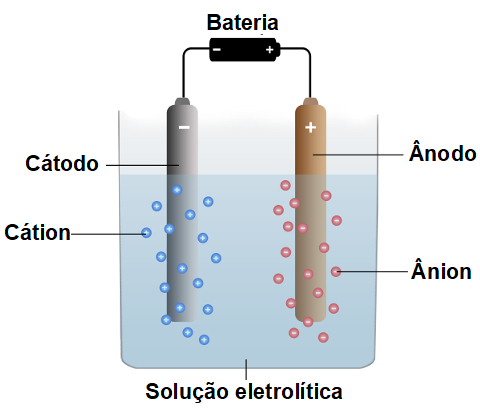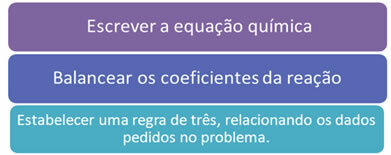The solubility coefficient (Cs) corresponds to the amount of solute needed to saturate a given amount of solvent under certain conditions of temperature and pressure.
Each substance has different solubility coefficients for each type of solvent.
Temperature can also affect the solubility of substances. For most substances, increasing temperature also causes increased solubility, with the exception of gases.
Gases have different solubility coefficients as pressure changes.
Example
The solubility coefficient can be demonstrated experimentally. Consider the following example:
If you add a spoonful of sugar to a glass of water, initially the sugar disappears and the water becomes sweet.
However, if more sugar is added, there will come a point where it will start to accumulate at the bottom of the glass.
At that point, the water reached its solubility limit. Any amount of sugar that is added will accumulate at the bottom as the solubility coefficient has been reached.
know more about Solubility.
How to calculate the solubility coefficient?
The formula to calculate the solubility coefficient is:
Cs = 100. m1/m2
Where:
Cs: solubility coefficient
m1: mass of solute
m2: mass of solvent
read about Solute and Solvent.
Classification of solutions
From the solubility coefficient, the solutions can be classified into:
unsaturated solution
A solution is considered unsaturated when the amount of solute is less than Cs.
In that case, still more solute can be added to the solution to be dissolved.
saturated solution
The solution is saturated when the amount of solute is exactly the same as Cs. It's the saturation limit.
For example, the solubility coefficient of NaCl is 36 g in 100 g of water at a temperature of 20 °C.
This means that this amount makes the solution saturated. If 37 g of NaCl are added to 100 g of water in a beaker, 1 g of NaCl will not dissolve and will accumulate in the bottom of the beaker.
The solute that remains at the bottom of the container is called a precipitate, bottom body or floor body.
This solution is now called saturated with background body.
supersaturated solution
A supersaturated solution occurs when the amount of solute is greater than the Cs.
It's a kind of solution that's hard to come by and quite unstable.
Know more:
- solubility product
- Chemical Solutions
- Homogeneous and Heterogeneous Mixtures
- Dilution of solutions
Exercise solved
Consider the following situation:
The solubility coefficient of a solute is 60 g / 100 g of water (80°C). How to determine the mass of solute needed to saturate 80 g of water, at this temperature condition?
To solve this question you should use the following formula, as the solubility coefficient has been given.
Cs = 100. m1/m2
So, to find the mass of solute needed to saturate 80 g of water, we have:
60 = 100. m1/80
m1 = 48 g
Exercises
1. (PUC/SP - 2006) Data:
BaSO solubility = 1.0 x 10-5 mol. L-1
CaSO solubility = 5.0 x 10-3 mol. L-1
MgCO solubility = 1.0 x 10-3 mol. L-1
Solubility of Mg(OH) = 5.0 x 10-4 mol. L-1
Solubility of NaC = 6.5 mol. L-1
Four independent experiments were carried out, mixing equal volumes of aqueous solutions of the compounds indicated in the concentrations specified below.
Experiment 1: BaCl2(aq) 1.0x10-3 mol. L-1 and Na2SO4 (aq) 1.0x10-3 mol. L-1
Experiment 2: CaCl2 (aq) 6.0x10-3 mol. L-1 and Na2SO4 (aq) 1.0x10-2 mol. L-1
Experiment 3: MgCl2(aq) 1.0x10-2 mol. L-1 and Na2CO3 (aq) 1.0x10-3 mol. L-1
Experiment 4: MgCl2(aq) 8.0x10-4 mol. L-1 and NaOH (aq) 1.0x10-4 mol. L-1
There was formation of precipitate:
a) only in experiments 1 and 3.
b) only in experiments 2 and 4.
c) only in experiments 1 and 4.
d) only in experiments 1, 2 and 3.
e) in all experiments.
a) only in experiments 1 and 3.
2.(UFRS) What are the aqueous solutions containing a single dissolved substance that can have a background body of this substance?
a) saturated and supersaturated.
b) only the saturated ones.
c) diluted unsaturated.
d) only supersaturated ones.
e) concentrated unsaturated.
b) only the saturated


